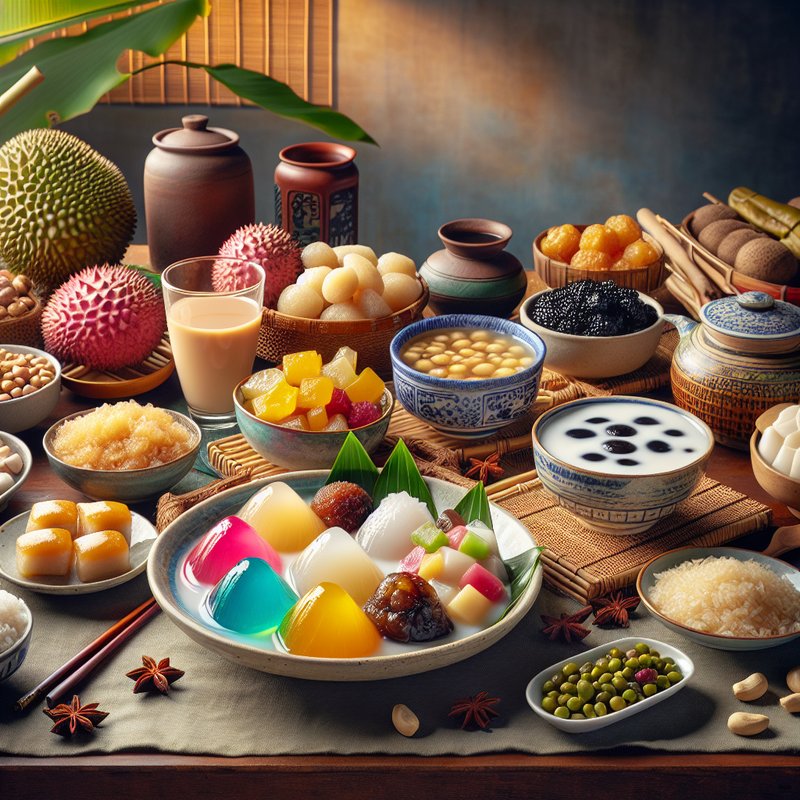The Cultural Significance of Vietnamese Desserts

Vietnamese desserts are more than just sweet treats; they are a reflection of the country’s rich cultural heritage and traditions. Rooted in both history and religion, these desserts often play a crucial role in festivals, celebrations, and family gatherings, symbolizing prosperity and happiness.
The ingredients used in Vietnamese desserts, such as rice, coconut, and mung beans, are staples in Vietnamese cuisine. These ingredients not only provide unique flavors but also hold cultural meanings, representing fertility, purity, and prosperity. Exploring these desserts offers insight into the Vietnamese way of life and their deep connection to nature.
Traditional Ingredients and Their Uses

Traditional Vietnamese desserts often incorporate ingredients that are readily available in the region. Rice, in its various forms, is a foundational element, used in dishes like sticky rice cakes and che (sweet soups). Mung beans and red beans are also popular, adding texture and nutritional value to these sweet treats.
Coconut, in its many forms—milk, cream, shredded, and even as oil—is another essential ingredient. It adds richness and a tropical flavor to desserts like banh da lon (layered rice cake) and keo dua (coconut candy). Other ingredients like pandan leaves, sesame seeds, and fruits further enhance the variety and complexity of Vietnamese desserts, making each dish unique.
Regional Variations in Vietnamese Desserts

Vietnam’s diverse geography and cultural regions contribute to a wide range of desserts. In the northern regions, where the climate is cooler, desserts like che kho (mung bean pudding) and banh troi nuoc (floating rice cakes) are popular. These dishes often feature warmer ingredients like ginger and sesame, providing comfort and warmth.
In contrast, the southern regions, with their tropical climate, boast desserts that are lighter and more refreshing. Here, you’ll find dishes like che ba mau (three-colored dessert) and sinh to (fruit smoothies), which highlight the abundant fresh fruits and coconut found in the area. These regional variations make exploring Vietnamese desserts an exciting culinary journey.
Must-Try Vietnamese Desserts

No exploration of Vietnamese desserts would be complete without trying some of the country’s most beloved sweets. Banh mi nuong la dua, a pandan-flavored sponge cake, is a crowd favorite, known for its vibrant green color and fragrant aroma. Another must-try is banh cam, sesame balls filled with sweet mung bean paste, offering a delightful contrast of textures.
For those who enjoy creamy desserts, che thai is a must. This mixed fruit dessert in coconut milk is not only delicious but also visually appealing, with its colorful array of ingredients. Finally, don’t miss out on che troi nuoc, glutinous rice balls filled with sweet black sesame paste, served in a warm ginger syrup—perfect for a cozy evening treat.

Leave a Reply